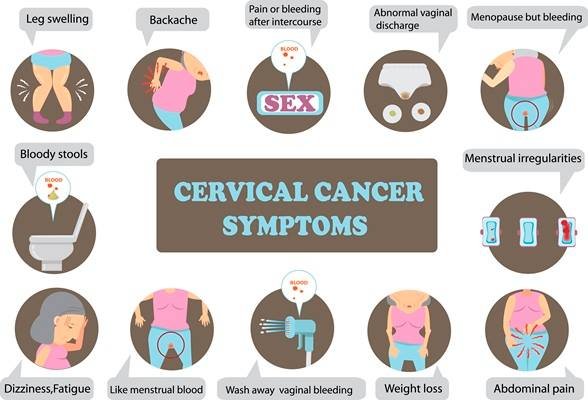Cervical cancer is a significant health concern for women worldwide. Yet, with the right knowledge and early detection, it is one of the most preventable types of cancer. This blog post aims to empower you with crucial information about the early signs and symptoms of cervical cancer, helping you stay vigilant and proactive about your health.
In this article, you’ll learn about the early indicators of cervical cancer, why they matter, and practical steps you can take to protect yourself. Let’s arm ourselves with knowledge and stay one step ahead.
Understanding Cervical Cancer
Cervical cancer starts in the cells lining the cervix—the lower part of the uterus. It often develops slowly over time and can be detected early through regular screening. Understanding its origins is the first step in recognizing the importance of early detection.
Most cervical cancers are caused by persistent infections with human papillomavirus (HPV), a common virus transmitted through sexual contact. While HPV infections are typically harmless and resolve on their own, some high-risk strains can lead to cervical cancer.
The Importance of Early Detection
Early detection of cervical cancer dramatically increases the chances of successful treatment. When identified in its initial stages, cervical cancer is highly treatable, often with less invasive methods. Regular screenings, like Pap smears and HPV tests, play a critical role in catching abnormalities before they develop into cancer.
By being aware of the early signs and symptoms, you can seek medical attention promptly, potentially saving your life. Knowledge is power, and understanding what to watch for can make all the difference.
Common Early Signs and Symptoms
Unusual Vaginal Bleeding
One of the most common early signs of cervical cancer is abnormal vaginal bleeding. This can occur between menstrual periods, after sexual intercourse, or even after menopause. Any unexplained bleeding should be discussed with a healthcare provider.
Unusual bleeding might be a sign that something isn’t right in your reproductive system. Don’t ignore it, as early intervention can lead to better outcomes.
Persistent Pelvic Pain
Pelvic pain that doesn’t go away can also be an early indicator of cervical cancer. This pain might be constant or occur intermittently, and it’s often not related to your menstrual cycle.
If you experience persistent pelvic discomfort, it’s essential to consult with a healthcare professional. They can help determine the cause and provide appropriate treatment if necessary.
Unusual Vaginal Discharge
Changes in vaginal discharge can also signal cervical cancer. Look for discharge that is watery, pink, or has a foul odor. While vaginal discharge is normal, any significant changes
should be evaluated by a healthcare provider.
Being attentive to these changes in your body can help catch potential issues early. Don’t hesitate to seek medical advice if something feels off.
Recognizing Less Common Symptoms
Pain During Intercourse
Experiencing pain during sexual intercourse, known as dyspareunia, can be a symptom of cervical cancer. This discomfort can result from tumors or lesions in the cervix.
If sexual activity becomes painful, it’s important to have a conversation with your healthcare provider. They can conduct an examination to identify the underlying cause.
Lower Back Pain
Though less common, persistent lower back pain can also be associated with cervical cancer. This pain might radiate down your legs and can be mistaken for other conditions.
If you’re experiencing unexplained lower back pain, especially if it’s accompanied by other symptoms, seek medical advice. A thorough evaluation can help identify the cause.
Swelling in the Legs
Swelling in one or both legs can occur if cervical cancer spreads and blocks lymph nodes or blood vessels. This symptom is often accompanied by pain and can significantly impact your mobility.
While leg swelling can result from various causes, it’s crucial to rule out serious conditions like cervical cancer. Consult your healthcare provider if you notice this symptom.
Risk Factors to Consider
HPV Infection
HPV infection is the most significant risk factor for cervical cancer. Engaging in safe sexual practices and getting vaccinated against HPV can reduce your risk.
Talk to your healthcare provider about HPV vaccination and other preventive measures. Being proactive about your sexual health is a vital step in cancer prevention.
Smoking
Smoking weakens the immune system, making it harder for your body to fight off HPV infections. This can increase your risk of developing cervical cancer.
Quitting smoking can significantly improve your overall health and reduce your risk of many cancers, including cervical cancer. Seek support if you’re ready to quit.
Family History
A family history of cervical cancer can increase your risk. If you have close relatives who have had cervical cancer, discuss this with your healthcare provider.
Understanding your family history can help your provider recommend appropriate screening and preventive measures. Stay informed and proactive about your health.
Preventive Measures and Screening
Regular Pap Smears
Pap smears are a crucial screening tool that can detect precancerous changes in the cervix. Regular screenings can catch abnormalities early, allowing for timely intervention.
Follow your healthcare provider’s recommendations for Pap smear frequency. Staying on top of your screenings can save your life.
HPV Testing
HPV tests can identify high-risk strains of the virus that cause cervical cancer. Combining HPV testing with Pap smears provides a more comprehensive screening approach.
Discuss the benefits of HPV testing with your healthcare provider. Early detection of high-risk HPV can lead to preventive measures that reduce your cancer risk.
Vaccination
The HPV vaccine is highly effective in preventing infections with high-risk HPV strains. Vaccination is recommended for preteens but can be given to young adults as well.
If you’re eligible, consider getting the HPV vaccine. It’s a powerful tool in preventing cervical cancer.
Taking Action and Seeking Help
When to See a Doctor
If you experience any of the symptoms mentioned or have concerns about your risk factors, don’t hesitate to see a healthcare provider. Early evaluation and intervention are key.
Your healthcare provider can perform necessary tests and provide guidance based on your individual risk factors. Prioritize your health and take action when needed.
Discussing Symptoms Openly
Don’t be afraid to discuss any unusual symptoms with your healthcare provider. Open communication is essential for early detection and effective treatment.
Your provider is there to support you and address your concerns. Honest conversations can lead to earlier diagnosis and better outcomes.
Staying Informed
Stay informed about cervical cancer and its symptoms. Educate yourself and others, and encourage regular screenings within your community.
Knowledge and awareness are powerful tools in the fight against cancer. Share information and support those around you in staying healthy.
Conclusion
Understanding the early signs and symptoms of cervical cancer is crucial for every woman. By staying informed and vigilant, you can take proactive steps to protect your health. Regular screenings, being aware of changes in your body, and seeking medical advice when needed can make all the difference.
Remember, early detection saves lives. Share this information with the women in your life and encourage them to stay proactive about their health. If you have any concerns or questions, reach out to your healthcare provider today. Stay healthy and stay informed.
Read also : Speed Up Healing Herpes Sores with These Expert Tips




